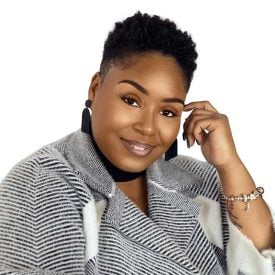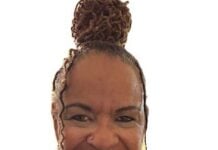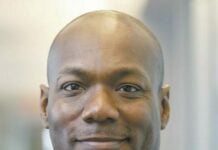In 2017, I read a stat that stated the No. 1 fear of most Americans was public speaking. The fear of death came in second.
Basically, more people are willing to die than engage in public speaking.
Going into a wormhole of Google searches and YouTube videos, I learned more about the fear of public speaking and communication among people. The reasons ranged from the fear of messing up, forgetting what to say, fear of confrontation and even a disinterest in the act of communication. Oftentimes, people share their frustrations with bad or a lack of communication, irritated by the strife it causes when things could be ‘simply’ fixed with a discussion.
These same frustrations of communication show up in DEI.
With each DEI facilitation I conduct, I begin with an activity that has participants try to identify their colleagues’ favorites based on one piece of information about them like the name of the city or town they were raised in. Once they receive that information, they must answer questions about their favorite food, song, color, etc. in 60 seconds. Once the time ends, individuals discuss how many items they got correct and what they did to answer the prompts.
Most participants randomly guessed, a few knew the answer to one or two questions, some observed what the participant had around them and others admitted to leaning into bias and sometimes even stereotypes.
I remind participants that these are ‘low stake’ questions that expose some biased thoughts and ideas. However, what if the prompts asked you to identify someone’s gender identity, sexual orientation, religious affiliation, socioeconomic status, health status, level of education, occupation, marital status, age, etc.? These topics have more weight and risk to them if someone were to “guess” the responses.
People make assumptions about others based on the experiences you have had before you even have an entire conversation with them. Once people connected to the point of the activity, they recognized how important communication is when navigating differences outside of their own.
I do this activity to show people how quickly we create answers in our heads without all the information, even if the intent is not to be harmful. This same thought process happens with individuals who create and control programs, practices and policies. Limited information mixed with mass communication leads to ineffective systems and individuals shutting down due to push back.
Although most people would rather perish, communication in DEI sectors is critical for continued advancement.
I would also like to respect those who are tired and angry with this work because they were silenced, oppressed and sometimes pushed out of their jobs and communities for wanting change. They saw no progression and became tired of doing this work with little to no return, no change and no effort. I thank those individuals for the work that they have done, which allows some of us to continue doing this work as we carry the torch forward.
Moving into this work from a communal aspect to a professional career, I accepted the difficulties of challenging systems and upholding the value of accountability. But I also realized that there will be times when I will have to choose my battles wisely.
For example, I chose not to change my title from DEI to something that would go undetected due to the fear of forthcoming anti-DEI legislation. This experience taught me the value of communicating the work to save the work and continue to make change. We know that language is important, that words mean things and that if people have intentions to create harm, they will use the aforementioned to best fit their agenda.
DEI has had and has many names: multicultural education, social justice, civil rights and more. However, the advocates, champions, supporters and educators of this work continue to make intentional progression no matter the name. It does grind my gears that DEI practitioners are being forced to be careful with our language — making sure we do not hurt the feelings of those who are taking resources, opportunities and support.
Tevin Campbell’s 1993 hit single, “Can We Talk?” is still sung in unison at any event I have attended. The crowd sings along, bellowing the lyrics that asks a series of questions and denotes his plans for action:
- “Now I’ve built up my confidence, next time you come my way, I’ll know just what to say”
- “Can we talk, for a minute?”
- “…I want to know your name?”
- “I started to write you letter, but I wanted to be move clever”
Although these lyrics are based on two people aiming to establish a connection, the focus of his song was to communicate.
Through fears, second thoughts and more, Cambell asked questions to learn more. He tried to limit assumptions and gather himself to learn more about the other person. Taking notes from this song, I ask that we do the same. Do not stop at the assumable facts, stereotypes and isolated events. Move beyond your fear and understand people’s experiences and identities in the work of DEI to ensure we create equitable environments across multiple sectors.
Remember to be intentional and find ways to talk, even if you initially are afraid. Tevin Campbell did it, you can too!
Take care, friends!
Your DEI Homegirl




